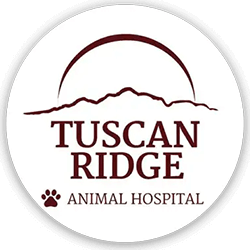At Tuscan Ridge Animal Hospital in Wake Forest, NC, our experienced veterinary team provides expert care and guidance for brachycephalic dog breeds, helping manage their unique respiratory and health needs. We combine thorough diagnostics with individualized treatment plans—whether that means medical management or surgical intervention—to improve comfort and function. As your local animal hospital, we’re committed to delivering compassionate, high-quality care tailored to these special breeds.
What are brachycephalic breeds?
Brachycephalic breeds are breeds of dogs that have a very smashed face appearance. Their nose is very short, and their face is almost flat relative to the actual nose. Breeds that would be classified as brachycephalic include dogs such as English Bulldogs, Boston Terriers, Shih Tzus, Lhasa Apsos, and French Bulldogs. These are probably the most common types of brachycephalic dogs seen in practice.
What are the most common health problems associated with brachycephalic breeds?
The most common health problems seen in brachycephalic dogs include brachycephalic airway syndrome. Because these dogs have such short noses, it impacts not only the nasal cavity but also the oral cavity. They often have a very elongated soft palate, making it difficult for them to breathe. Other problems include collapsing trachea, which can also be seen in other small and toy breed dogs. These are likely the two most common problems observed.
How do breathing difficulties manifest in brachycephalic breeds?
Breathing difficulties in brachycephalic breeds generally manifest as panting or open-mouth breathing not necessarily associated with exercise or activity. More commonly, there is a loud respiratory noise, sounding like the dog is working hard to breathe. They sometimes sound like little pigs snorting, which is due to their airway being so collapsed that they struggle to move air through their nasal passage and breathe properly.
What can owners do at home to help manage their dog's brachycephalic airway syndrome?
Owners can manage their dog's brachycephalic airway syndrome by avoiding exercise during very hot and humid months or times of the day. In the South, it's advised to exercise dogs early in the morning or late in the evening when it's cooler and less humid. Additionally, managing the pet's weight is crucial, as obesity exacerbates the breathing problems in brachycephalic breeds. Maintaining an appropriate body weight is a significant help.
What can veterinarians do to help brachycephalic dogs with breathing problems?
Veterinarians can perform surgery to correct severe breathing problems in brachycephalic dogs. Anesthesia is safe for these breeds, with extra precautionary measures such as pre-oxygenation. Under anesthesia, these dogs often breathe better due to the insertion of a breathing tube, which allows direct exchange of oxygen and gas anesthesia, opening up their airway. This provides better oxygenation than they can achieve on their own.
Is there a specific surgery for brachycephalic breeds to help with breathing?
There is a specific surgery for these breeds that involves making changes to the oral cavity and nasal openings to facilitate easier breathing. If a pet needs this surgery, it is the most effective way to help them breathe better and lead a healthier life. Not every brachycephalic dog requires surgery, but it's recommended to discuss with a veterinarian if a brachycephalic dog shows significant breathing problems.
Give us a call. We're happy to answer any questions you have about whether your pet is experiencing significant breathing problems and if they would be a good candidate for surgery to correct that issue. Thanks for spending some time with me today. I hope you found this discussion helpful. If you have any questions, please don't hesitate to reach out to us at Tuscan Ridge Animal Hospital. You can call us directly at (919) 556-1944, or you can email us at [email protected]. But please do reach out, and we'll get back to you as fast as we can. Don't forget to follow us on social media Facebook, Instagram.
